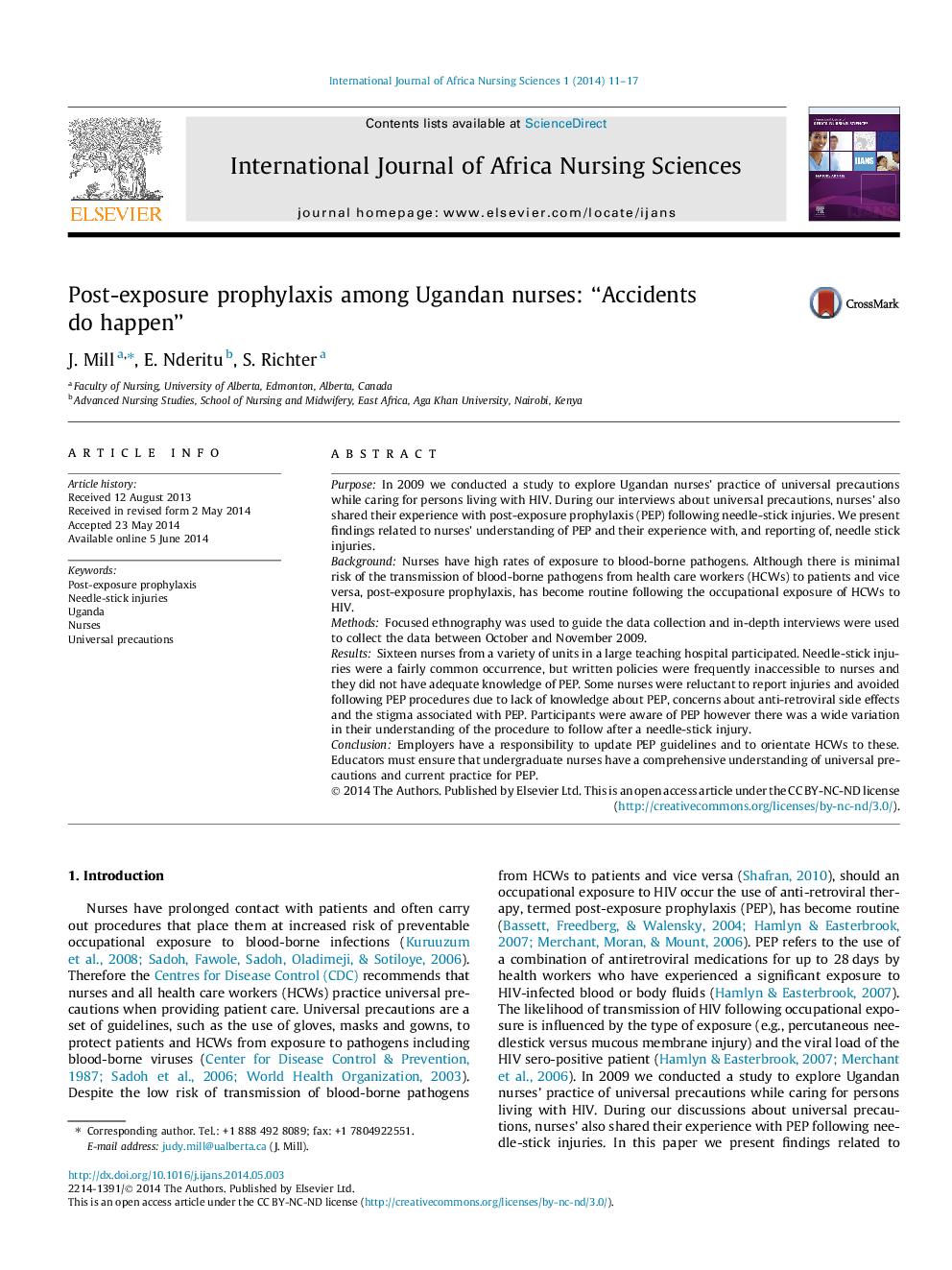| Article ID | Journal | Published Year | Pages | File Type |
|---|---|---|---|---|
| 2685979 | International Journal of Africa Nursing Sciences | 2014 | 7 Pages |
PurposeIn 2009 we conducted a study to explore Ugandan nurses’ practice of universal precautions while caring for persons living with HIV. During our interviews about universal precautions, nurses’ also shared their experience with post-exposure prophylaxis (PEP) following needle-stick injuries. We present findings related to nurses’ understanding of PEP and their experience with, and reporting of, needle stick injuries.BackgroundNurses have high rates of exposure to blood-borne pathogens. Although there is minimal risk of the transmission of blood-borne pathogens from health care workers (HCWs) to patients and vice versa, post-exposure prophylaxis, has become routine following the occupational exposure of HCWs to HIV.MethodsFocused ethnography was used to guide the data collection and in-depth interviews were used to collect the data between October and November 2009.ResultsSixteen nurses from a variety of units in a large teaching hospital participated. Needle-stick injuries were a fairly common occurrence, but written policies were frequently inaccessible to nurses and they did not have adequate knowledge of PEP. Some nurses were reluctant to report injuries and avoided following PEP procedures due to lack of knowledge about PEP, concerns about anti-retroviral side effects and the stigma associated with PEP. Participants were aware of PEP however there was a wide variation in their understanding of the procedure to follow after a needle-stick injury.ConclusionEmployers have a responsibility to update PEP guidelines and to orientate HCWs to these. Educators must ensure that undergraduate nurses have a comprehensive understanding of universal precautions and current practice for PEP.
